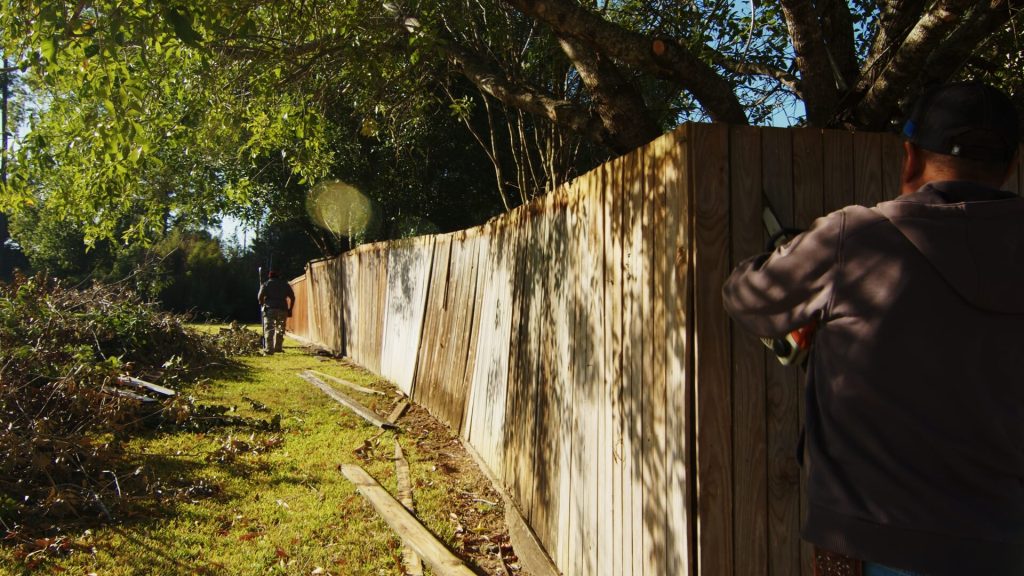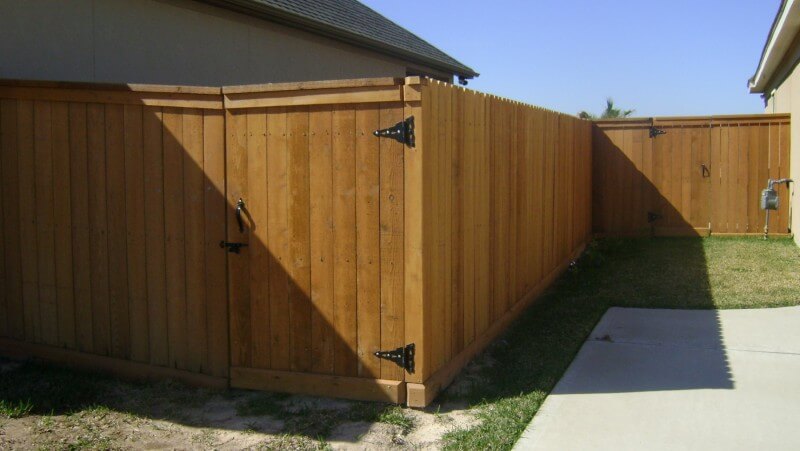The Top Five Fence Repair Problems Homeowners Need to Fix
Our clients have revealed that fence repair occupies a prominent position among all home maintenance challenges. These problems can grow rapidly when homeowners fail to address rusted metal parts or unstable posts. This article evaluates the primary fence repair issues that occur in residential properties through effective solutions which support property protection alongside aesthetic quality. A proactive understanding of these problems at present will help you save money while reducing future expenses.

Key Points About Fence Repair
The stability of a fence structure depends on reinforcing broken or loose posts through concrete footers or total post replacement.
The treatment of wood rot in fence panels and boards requires both removing the damaged sections and installing pressure-treated lumber for replacement.
The correct functioning of gates depends on hardware tightening as well as diagonal bracing installation and post reinforcement.
Protective painting combined with rust conversion treatment and sanding is necessary to handle metal fence corrosion.
Following severe weather conditions storm damage fence repair includes changing broken posts while strengthening cracked panels before placing displaced sections back in their proper position.
Broken or Loose Fence Posts
The stability and security of fences heavily depend on fence posts that remain intact. A compromised post leads to fence line instability which results in sagging or leaning or complete collapse thus creating security threats. The damage to fence posts occurs mainly through soil erosion alongside water damage and wood rot at their bases.
The solution for loose posts includes the addition of concrete footer reinforcement or metal post anchors for re-securing them. The solution for broken posts involves either repairing through splicing and sistering matching materials to the damaged area or installing an entirely new post. Our recommendation includes applying preservatives to wooden posts together with proper drainage setup at their bases. Posts installed below the frost line serve as a solution for properties that experience freeze-thaw cycles because they protect against future heaving that leads to loosening. Property owners must perform regular inspections and maintenance checks on wood fence posts since these require more maintenance than vinyl or metal fences.
Rotted Wood Panels and Boards
The aesthetic appeal of wooden fences comes with a major drawback because they deteriorate through rot when exposed to constant moisture and weathering. You must resolve wood rot problems immediately when you notice soft wood combined with discoloration and crumbling because it will spread throughout the surrounding wood.
The following tested solutions serve to fix rotted wood damage:
- The removal process includes using a reciprocating saw to cut away damaged wood until reaching solid wood sections.
- Use copper-based preservatives to treat the surrounding wood for preventing future rot damage.
- The replacement of damaged boards should use pressure-treated lumber which meets ground contact requirements.
- Apply a water-resistant sealant to shield both new wood and existing fence sections from damage.
When rot spreads across multiple panels it becomes more effective to replace all sections instead of fixing individual boards to ensure structural integrity and visual consistency.
Periodic inspections along with maintenance activities for fences lead to longer wood fence longevity and reduce future repair expenses.
Sagging Gates and Misaligned Hinges()
Any fence system becomes less functional and less attractive when its gates sag because of loose hinges or incorrect post placement or natural ground settling. We will identify and correct these typical problems to bring your gate back into working condition.
| Issue | Cause | Solution |
|---|---|---|
| Gate Sag | Weight stress | Install diagonal brace |
| Hinge Problems | Loose screws | Tighten/replace hardware |
| Post Movement | Ground settling | Reset/reinforce posts |
Let’s tackle these repairs systematically. To address small sagging issues we first examine and tighten all hardware components that connect the gate hinges. We must install a cross brace or modify the post depth if tightening or replacing hardware does not fix the problem. For a gate to operate smoothly it requires correct alignment together with solid anchor points. The inspection of hardware plays a crucial role since deteriorating fasteners and fittings create most gate alignment issues.
Rust and Corrosion on Metal Fencing
The contact between metal fencing and moisture and oxygen enables rust and corrosion to form which threatens both its structural strength and visual appeal. These problems require proper maintenance along with timely intervention to achieve resolution. The rust-resistant characteristics of ornamental metal fencing are enhanced by using Powder-coated steel.
The following tested methods help fight rust and corrosion:
- Use wire brushes or sandpaper to sand areas affected by rust and old paint so that rust and paint flakes become loose
- Apply rust converter to convert existing rust into a compound that is stable
- Apply rust-inhibiting primer to bare metal surfaces within 24 hours of sanding
- Use weather-resistant paint or coating specifically designed for metal surfaces as the final step of the process.
The process of replacing all affected sections will be necessary for severe corrosion cases. The practice of Regular inspections allows us to detect early signs of oxidation because rust formation accelerates during wet seasons. We advise you to take care of rust spots at the earliest opportunity to stop the damage from spreading.
Storm and Impact Damage Repair
Three typical forms of fence damage occur after severe storms and accidental impacts which result in broken posts, cracked panels, and displaced sections. The assessment of storm damage starts with a check of post integrity at ground level to determine if any posts have snapped or become disconnected from their concrete footings. These require immediate replacement to maintain structural integrity.
The assessment of cracked panels will determine whether we need to perform a replacement or a simple fence repair. We can strengthen the panel through metal bracket or wood sister board installation when the damage is contained to one area. The process of restoring sections that got misaligned involves both post anchor adjustment and new fastener installation.
The installation of wind braces and impact-resistant hardware during repairs will help protect your fence from future storm damage while securing it against harsh weather conditions. The Texas summer heat causes extra stress on fence joints and hinges which makes regular inspections necessary to stop structural failures from occurring.

Frequently Asked Questions
How Often Should I Reseal or Paint My Fence to Prevent Damage?
We advise homeowners to reseal wooden fences every 2-3 years while painting them every 3-4 years. We should protect the protective barrier of your fence before moisture damage and warping and rot occur.
Can I Mix Different Fencing Materials When Making Repairs?
The combination of different materials for fence repairs should be avoided because it causes damage to both structural stability and visual appearance. We should use matching materials for your fence to achieve uniformity and maintain its strength.
What’s the Average Lifespan of a Residential Fence?
Residential fence lifespans show significant variation because wood fences last between 15-20 years while vinyl fences last 20-30 years and aluminum fences exceed 30 years and wrought iron fences reach 50 years with proper maintenance and climate conditions.
Is It Cheaper to Repair Fence Sections or Replace the Entire Fence?
The best course of action is to fence repair in sections when damage amounts to less than 30% of the total fence system. A full replacement becomes more cost-effective when the damage exceeds 30% because it reduces both labor and material costs.
Do I Need Permits to Repair My Existing Fence?
Our team will verify local codes before starting work on full section replacements or any modifications to fence height or structural elements or location.
Takeaway
The most common fence repair problems encountered by homeowners include unstable posts along with storm damage. We can increase the lifespan of fences significantly by dealing with these issues right away through concrete reinforcement of posts and wood replacement and gate alignment and rust protection and structural maintenance. The prevention of costly repairs and long-term functionality of your fence depends on regular inspections combined with preventive maintenance practices.








